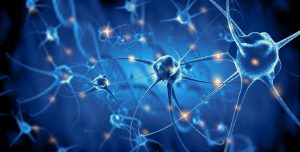Definition
noun, plural: erythroblasts
A nucleated red blood cell that develops into a reticulocyte
Supplement
The blood cells of vertebrates are derived from multipotent hematopoietic stem cell. A hemocytoblast is a multipotent hematopoietic stem cell that gives rise to both lymphoid and myeloid stem cells. The myeloid stem cells are progenitor cells that give rise to erythrocytes, granulocytes, monocytes, and megakaryocytes. The process by which a progenitor cell differentiates into an erythrocyte is referred to as erythropoiesis. Erythropoiesis begins in stem cell that gives rise to a series of committed progenitor cells. A proerythroblast is a cell in the earliest stages of erythropoiesis, and serves as the precursor cell for erythroblast (or normoblast).
In humans, both the proerythroblast and the erythroblast are nucleated red blood cells. The terms erythroblasts and normoblasts are sometimes used interchangeably. However, the erythroblasts pertain not just to the normoblasts but also to the megaloblasts. The normoblasts are erythroblasts that would differentiate later into the typical erythrocyte. The megaloblasts, in contrast, are atypically large erythroblasts that would later turn into a megalocyte.
In the course of erythropoiesis, an erythroblast would undergo three stages: early, intermediate, and late. The erythroblast in the early stage is described as basophilic. The one in the intermediate stage is described as polychromatic (or polychromatophilic). The erythroblast in the late stage is described as orthochromatic (or orthochromatophilic). In humans and other mammals, the orthochromatic erythroblast (or normoblast) exudes its nucleus. It turns into an anucleated polychromatic erythrocyte (also called a reticulocyte), which will eventually become the fully differentiated red blood cell, erythrocyte.
Synonym(s):
- normoblast
See also:







